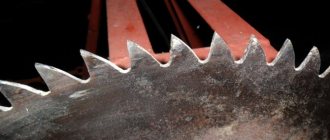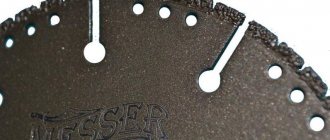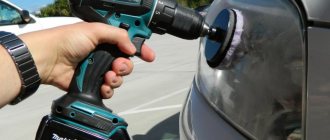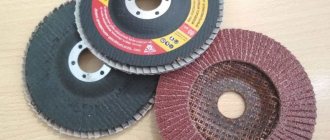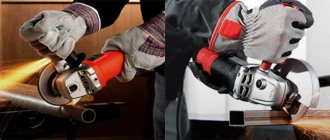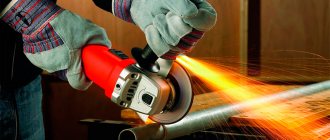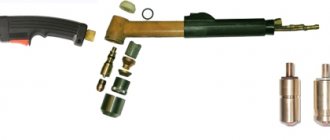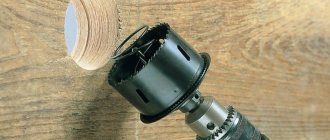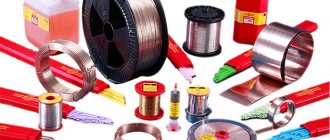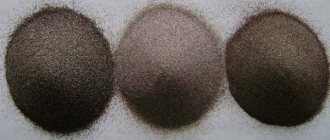Choose the right one diamond blade for an angle grinder, circular saw or wall chaser is not so easy these days - especially if you are encountering all this for the first time. The incredible number of different blades dazzles your eyes, and in order to decide what you need, you need to know exactly what material you plan to cut and under what conditions the work will take place. Understanding these two factors will not only allow you to achieve the desired quality of cut and maximum saw performance, but will also save you time and sometimes even save your health. That is why, when choosing a disc for cutting or grinding, you should abandon obsolete abrasive blades and pay attention, first of all, to diamond discs.
Characteristics and scope
In order for the work to proceed without problems, the cutting wheel must be replaced in a timely manner. That is why this is the most consumable part when operating an angle grinder. In general, there are simple and diamond discs, but we will consider the second type, because it is the most popular and is primarily valued for its durability. However, cutting wheels can also vary depending on the surface they are intended for.
Types
According to the type of design and manufacturing technology, there are circles:
- Segmented - the body is divided by slots that divide the surface into several sections. Thanks to this device, the wheel is more resistant to mechanical loads and temperature changes, has greater productivity, but the cut after it will not be of the highest quality. Well suited for rough structures.
- Solid - have a cutting tape interspersed with artificial diamonds, running along the edge of the circle. The main purpose is cutting ceramic products and other types of materials that require precision when working with them.
- Turbo discs - have an oblique notch along the edge of the circle, which makes cutting more accurate than segmented discs. Due to its design features, it can withstand high temperature loads, and therefore has an increased cutting speed. Works with a variety of mineral materials, ranging from sandstone to granite.
- Turbo segmented - a hybrid of the first and third types, taking all the best from them, is universal in use and has high performance.
Working principle of diamond cutting disc
Most diamond blades are used on angle grinders with speeds up to 12,000 rpm. The maximum number of revolutions that the best wheels can withstand is 13900 rpm, but there are not too many tools capable of developing them when cutting.
Only the diamond itself comes into contact with the surface being treated - it protrudes above the surface of the rim and, when rotated, abrades the material into fine dust. The multi-layer structure of the cutting edge ensures that the disc is always ready for work - diamonds that have worn out or flown out of the socket are replaced by others that are located in a lower layer of the rim.
Excess heat is dissipated through the disk body, but, nevertheless, it heats up to fairly high temperatures, which requires compliance with certain safety rules when dry cutting.
The durability of the wheel and the effectiveness of its use depend on the size of the diamonds. Large ones provide efficient operation, but wear out quickly, small ones cut very accurately, but more slowly, their service life is 25 - 30% longer than that of tools with large crystal fractions.
How to choose the right one for an angle grinder?
First of all, you need to decide what type of material you will have to work with and what size the surface to be processed will be. This affects what kind of circle design is needed. Most cutting wheels are designed for cutting non-metallic materials, such as glass, concrete or brick, but there are also those that are made specifically for metal work. Therefore, you need to take into account that for each type of working surface there is its own type of cutting wheel.
One of the basic rules for choosing discs is that for “soft” materials, purchase wheels that have a cutting surface with a hard diamond surround; for “hard” materials, on the contrary, with a “soft” one. The reason is that when cutting hard materials, diamonds wear out very quickly, and new ones must appear to replace them as quickly as possible. On the contrary, in a hard cutting strip, diamond inclusions will last much longer.
Introduction to Diamond Cutting Wheels
Wheels with diamond cutting edges for waterless cutting were first created in the design bureaus of the Japanese company Sankyo Diamond Tools, a structural division of Hitachi Corporation.
Many technologies were used for the first time, so the wheels were not reliable enough and quickly failed. For example, diamonds and the cutting part were attached to a steel base using high-temperature soldering. During operation, when a large friction force occurred, the metal heated up, the solder melted and the working part simply fell off. With water cooling, such circles worked more or less tolerably, but with dry friction their service life was short.
The fact is that diamond does not cut the material, but abrades it into dust; high frictional forces are accompanied by rapid heating - the heat does not have time to be dissipated throughout the body of the circle, in addition, despite the presence of special slots, the circle is deformed when heated. Changes in shape are insignificant and do not threaten destruction, but have a negative effect on the strength of the connection.
Sankyo Diamond engineers also proposed other solutions - sintering the working part and the base under high pressure. This connection is more durable and can withstand significantly higher temperatures. Thus, it was possible to create segmented and solid disks that are resistant to heat and deformation. The technology is still in use today.
The second solution is laser welding at the molecular level. This technology produces only segmented circles. In terms of strength and reliability, both types of discs are almost the same, although many professionals believe that those made by laser welding are better.
Size
The diameter of the disc affects such important parameters as cutting depth and working speed. On average, the sizes of cutting wheels range from 115 mm to 230 mm, sometimes reaching more than 300 mm. The latter are intended mainly for powerful mechanisms - such as stationary cutting machines or gas cutters.
Expert opinion
Levin Dmitry Konstantinovich
Under no circumstances try to put a larger disc than necessary on an angle grinder. In this case, you will have to remove the protective casing, and this can lead to serious work-related injuries, since if the circle breaks naturally, the debris can seriously injure you. You can work ONLY with a casing and full protection.
Design of diamond cutting discs
Structurally, a diamond disk is a steel circle with a cutting part and slots over the entire area, which facilitate heat removal and reduce deformation stress. Diamonds are interspersed throughout the rim of the disc. They are inserted into a rim made of nickel, zinc, cobalt and tin alloys. With a linear speed of up to 80 m/s and enormous frictional forces, the fastening must be extremely strong, which is achieved using special technologies.
To ensure that the cutting part is held under heavy loads, they can be secured by laser welding, sintering, electroplating or soldering. Soldering is only used on cutting discs using water-cooled machines.
Depending on the method of securing the diamond, the purpose of the disc is determined. Galvanically fixed diamonds are designed to work with soft types of natural stone, processed by laser welding and sintering, especially segmented ones - for all types of hard materials in a dry and “wet” method.
The holes and slots are located strictly symmetrically, and the mass of diamonds is also balanced in diametrically opposite directions. This eliminates vibration and “beating” of the disk and ensures uniform cutting. But you can use dry cutting wheels only to make a straight cut - with a curved trajectory, the disc can not only lose diamonds, but also be destroyed. This type of instrument is very sensitive to lateral loads.
1. Damping slots. 2. Cutting layer. 3. Mounting hole. 4. Steel disk.
Tips on how to extend service life
What type of diamond blades do you work with most often?
SolidSegmented
There are a few simple tips to ensure that a newly purchased cutting wheel lasts as long as possible and works out the entire amount spent on it:
- Discs with a larger wheel diameter will work longer because they have a low load on the cutting crystals (but remember that the size of the wheel must be selected according to the type of mechanism!).
- The more powerful the tool, the more stable its speed, thus the disc wears out less.
- Choosing the right disc type for the material.
- Never exceed the permissible speed.
Features of application
After purchasing diamond or other discs for an angle grinder, it is important to familiarize yourself with the list of materials for which they are intended. In order not to forget what materials they are intended for, it is recommended to save the packaging until the products are disposed of.
It is necessary to install the product into the tool using a special fixing key. If, after installing the wheel in the seat of the angle grinder, it begins to rub against the cover, then it is prohibited to start the device. Various types of work with angle grinders should be carried out using protective equipment: goggles, a respirator or mask, gloves and special clothing.
It is important to pay attention! When working with an angle grinder, the tool should be held with both hands, as strong vibrations occur during its operation.
When cutting granite or concrete, it is recommended to use the wet method. This will not only eliminate the occurrence of dust, but will also allow the cutting disc to cool during operation. Both methods can be used to cut stone, marble or ceramics.
Features of selection and operation
When choosing a tool, it is necessary to take into account its outer and mounting diameters, the configuration of the cutting part and the manufacturer’s recommendations. The maximum possible cutting depth depends on the outer diameter; the most common diameters are 115, 125, 180 and 230 mm, the maximum size for hand tools reaches 320 mm, for machine tools – 600 mm. Standard mounting diameters are 22.23 mm for disks up to 230 mm in size and 25.4 mm for disks 300 mm and larger.
When choosing, pay attention to the product labeling. The speed of the tool should not exceed the permissible revolutions per minute indicated on the disc marking. The recommended cutting material and direction of rotation are also indicated.
The main factors that increase the service life of diamond wheels:
- Cutting with a larger diameter reduces the load on the work surface.
- The high power of the tool eliminates the drop in speed.
- Optimal choice and strict adherence to the rules of disk operation.
- Strict adherence to a straight cutting path.
- Elimination of overheating during operation.
- Metered supply of tools. It is advisable to perform deep cuts in several passes; the optimal depth of the pass is equal to the height of the cutting part of the disk.
Diamond bond
The bond is a mixture containing metal and diamond. This is the cutting edge of the diamond wheel. Each manufacturer uses its own technology for producing such a composition. This is an important component on which the range of processed materials depends.
For materials with increased hardness, a cutting element with a soft bond is required. For soft materials, a blade with a hard bond is optimal. This is due to the fact that diamond wheels perform the grinding function, and the renewal of the cutting element depends on the strength of the bond.
Working with hard rocks will be accompanied by gradual natural wear of the soft bond, as a result of which more and more diamonds will come into play. This is an important factor for making accurate cuts.
The soft bond is considered more delicate and is therefore used for many materials. Most universal-type cutting accessories are equipped with such a bundle.
The cutting performance and operational characteristics of the tool depend on the correctly selected blade. The packaging and casing of the disc contain information about the materials for which it is designed.
Safety precautions
The grinder is one of the most traumatic tools that can cause severe injuries to the master.
Safety rules that must be followed:
- All work is performed in special clothing - a protective suit, gloves, construction glasses and a respirator.
- It is forbidden to cut with a grinder without a protective casing and to process workpieces placed in water.
- The cut is performed away from you in order to control the geometry of the cut, holding the tool with both hands.
- Do not put too much pressure on the disc - this can lead to damage and rupture.
- The cable length must be sufficient for free manipulation of the unit. At the same time, you need to place the wire so that it does not get under the disk and under the master’s feet.
- The workpiece should be securely fixed on a workbench or other plane, preferably wooden.
- It is forbidden to hold the grinder vertically and put it aside with the rotating disk.
- All work must be carried out in a well-ventilated area.
When choosing a disk for cutting tiles, you must read the markings indicated on the product. The circle must correspond to the type of material that is planned to be processed, and the diameter must correspond to the model of the grinder.
In addition, you need to follow the recommended speed and select the optimal thickness of the nozzle. Ignoring these principles will not only reduce the quality of work, but may also pose a threat to the health of the master.
Dry cutting
For the dry method, discs are used in which air passing between the segments is used to cool the tool. The technology should ensure dust removal, which increases productivity and facilitates work. However, such cooling is not enough, so it is necessary to take breaks to cool the diamond wheel.
The dry method is used when performing work in rooms with laid communications, in cases where the use of water is impossible. Discs designed for dry cutting can also be used for wet cutting, but not vice versa.
Getting rid of dust
One of the disadvantages of an angle grinder is the large amount of dust generated during the sawing process. Here are a few “life hacks” to reduce dust:
- Do not cut through the entire thickness of the tile - just make a small groove and then simply break the tile along the cut line.
- Use wet cutting or water cooling, which will prevent debris from flying around.
- Get a vacuum cleaner designed for construction needs.
You can use the vacuum cleaner without an assistant. Craftsmen suggest building an impromptu hood from a container and a vacuum cleaner:
- Cut off the top of the plastic canister.
- In the side part, cut a round hole for the vacuum cleaner hose.
- Place the workpiece and grinder over the container.
- Turn on the vacuum cleaner and make a cut over the hood.
Diamond application
The cutting function is performed by a diamond-coated disk. Diamonds are applied to certain areas, and therefore there are two types of products:
- discs with diamond coating over the entire surface;
- circles with spraying on the surface of the teeth.
Abrasive spraying is applied from the end or peripheral surface (ring-shaped or over the entire surface). The volume of the composite containing diamond depends on the geometric dimensions of the working surface, which directly affects the price of the product.
Diamond blade
When choosing, you should consider the width, since thickness only affects durability. The width determines the area of impact on the surface being treated, which determines the performance and operating temperature range.
Discs with a smaller width allow for increased rotation speed and depth of impact. Wide models provide higher precision and cleanliness.
The surface to be treated must be wider than the working layer - this is necessary for its uniform development and self-sharpening.
Cutting edge type
Segmental
Designed for quick dry cutting of asphalt, wet concrete, ceramics, reinforced concrete, granite, natural stone, brick. The cutting edge of such products is divided into separate segments, between which there are grooves that remove heat. The shape of the grooves depends on the material the blade is intended to cut. So, to work with asphalt, a wide gap is required. Smaller segments reduce vibration and promote better cooling.
The diamond segments on the discs are secured by laser welding. Used for work requiring greater speed and productivity, but with low requirements for cutting accuracy
With continuous edge
They do not have cutouts on the body and are intended for work that requires the most precise cutting. The speed of work on disks with a solid edge is lower than that of segmented ones, but the resulting cuts are very smooth, and the edge has no defects or chips.
Used on stationary and mobile machines. Divided into two subspecies:
- for wet cutting – used only in stationary tools;
- for dry cutting - in hand-held and stationary tools (grinders, etc.).
Used for cutting ceramic tiles, glass, marble, tiles, artificial and natural stone, and other fragile materials.
Turbo
Used for wet and dry cutting. They have a wavy cutting edge and holes that provide additional heat dissipation. Used for processing concrete, granite, paving slabs, brick, building stone. They provide a clean edge; when cutting reinforced concrete, they react differently to pieces of reinforcement than other types of discs, so it is best to use these discs for cutting such material. Soft cutting allows you to get edges without chipping, so processing porcelain stoneware, stone slabs and ceramic tiles is allowed.
Improved versions of Turbo discs: Wave, Super-Turbo, Turbo+ - their wave-shaped, rather than flat, shape improves cooling and emission of dust and other cutting products.
Turbo segment
Turbo segment discs have a wavy edge and special ventilation holes in the body. Combines the advantages of segment and turbo cutting-off diamond wheels. Provides fast cutting with a clean edge.
The distribution of diamonds in the cutting edge also affects the scope of application of the discs. Diamonds can be distributed in a conventional or sandwich manner. With conventional distribution, the diamond component is applied evenly, with sandwich distribution it is calculated. In addition, fine-grained diamonds are used for processing hard materials, and coarse-grained diamonds for soft ones.
